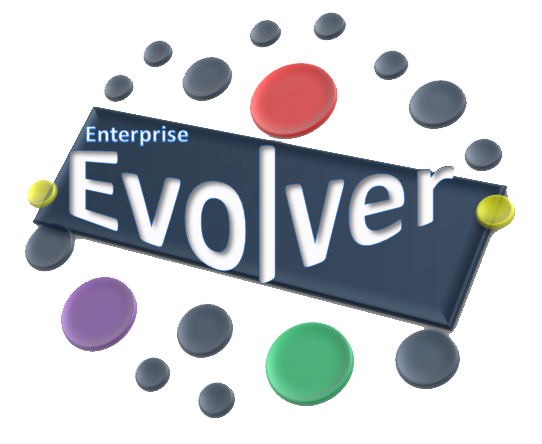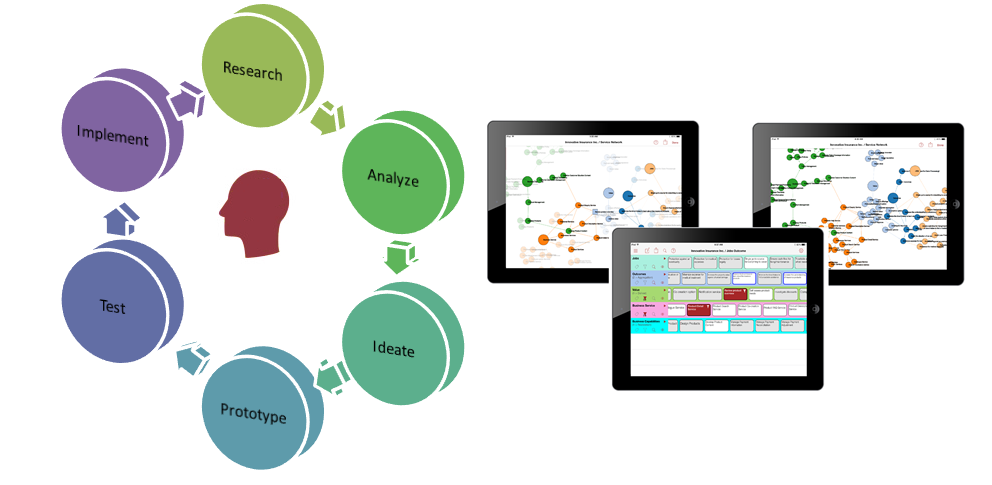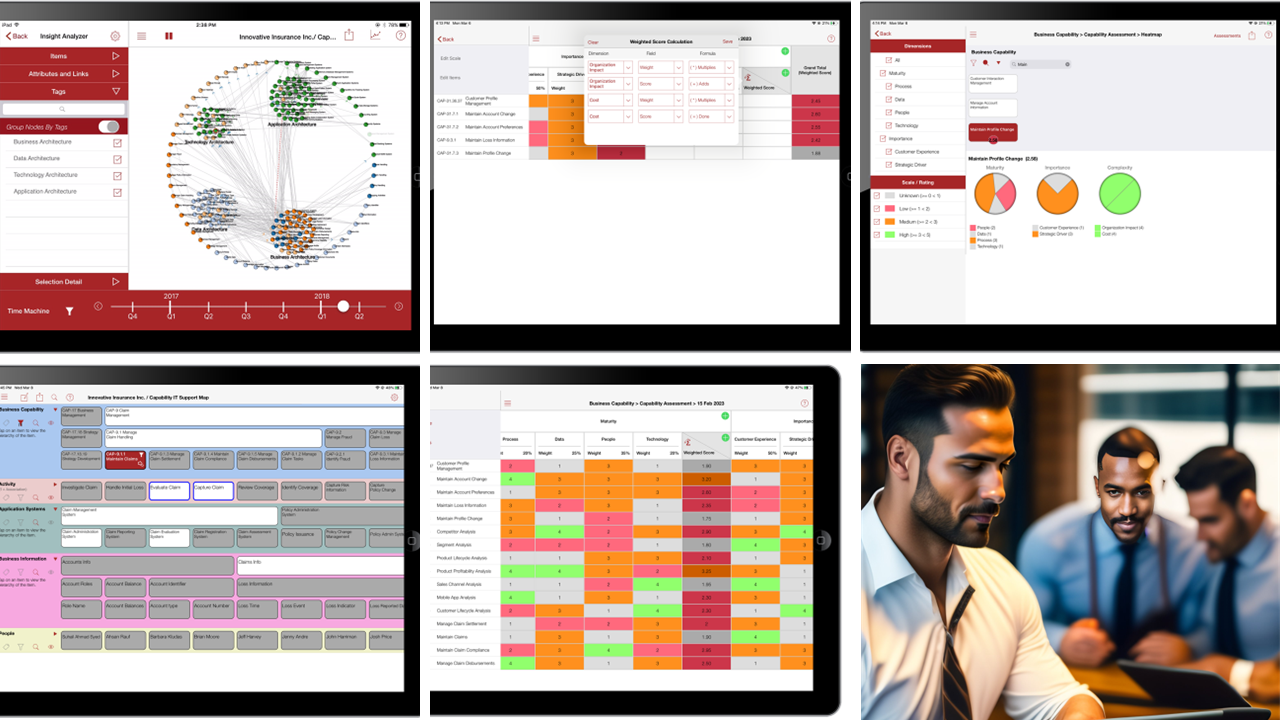In the traditional enterprise architecture (EA) organization, architecture is developed by capturing the baseline and then defining the target architecture and roadmap to achieve the vision. Many times a future state is created by focusing on architecture framework(s) and by creating many drawings and maps spending countless amount of time and money. These approaches of ivory tower planning is bound to fail because an enterprise is a living complex system where connections between resources (e.g. people, systems, data, processes, services , technology, etc.) are constantly changing and evolving and the target is evolving too.
We bring a unique approach of Design Thinking (DT) to EA practice to inspire creativity and innovation to an architecture team. By integrating DT with EA practices we simplify complexity in EA processes and help you in creating pleasurable, usable, useful and elegant architecture solutions that add value for your stakeholders. We have also developed our own design centric business transformation mapping app called ‘Enterprise Evolver‘ which is simple, intuitive, and pleasurable to use for any kind of business transformation initiative. Some key points of our design centric approach to EA are as follows:
- Focus on understanding the big picture to comprehend the enterprise reality and not on framework, documentation & drawings. Continuously introduce new EA products and services to stakeholders to manage their experience.
- Design non-architecture stakeholder’s interaction and collaboration by focusing on their wants and needs; use the following standard format to capture architecture related experience requirements: Stakeholder Role + Goal (Job to be done) + Outcome , some examples are provided below:
“As a Marketing Manager, I want to know what business parts (internal business processes, people, technology, applications, services , products and touchpoints etc) come together to respond to my customer’s shopping journey, so that I can better understand my customer pain points and their impression about the organization. ” In this sample requirement, we captured three critical information:- stakeholder role, stakeholder’ goal/job (first sentence ) and stakeholder’s outcome (last sentence).
Take another example such as below:
“As a Business Manager, I want to see how the architecture roadmap will help me on my top priorities, so that I can allocate budget on the right capabilities.”
Right Stakeholder’s interactions are designed by understanding their experience requirements.
- Use prototypes to explore potential architecture solutions (e.g. blueprints and maps) . Iterate quickly on prototypes. Your stakeholders can’t necessarily tell you how to create architecture maps and blueprints but they can collaborate with you on business challenges they are facing and can provide valuable input about their wants and needs. Use our app Enterprise Evolver to quickly create blueprints/maps, share /communicate and tell the story; gather stakeholder’s inputs & feedback; iterate and capture their needs and validate the reality.
Co-create Maps and Blueprints with your non-architecture stakeholders and comprehend the reality of the organization.
- Map many stakeholders’ journeys to explore the problem space and to improve their experience. Understand what steps your stakeholders go through in developing for example, a business strategy. Mapping stakeholders’ journeys help us to design EA services to deliver value at their moment of truth. Think in terms of touch point and their moments of truth . If you are using a Powerpoint slide, Visio drawings, and traditional EA tools to communicate architecture deliverables and artifacts with your stakeholders, then those tools are touch points that shape your stakeholders impression of the EA organization. Again use the app Enterprise Evolver to quickly create stakeholders’ journey maps and to understand their environment and activities that they take in their day to day business operation.
Services deliver value to your stakeholders at their “Moment of Truth”, whereas business capabilities deliver outcomes when their “job” is done or “goal” is achieved.
- Build an outcome driven & service oriented EA organization “EA as a Service (EAaaS)”. Create EA service map and link the EA services (eg. architecture assessment services, road maping service, EA dashboard service etc) to business value. Create an EA capability model (e.g. Architecture Life Cycle Management, Architecture Competency Management , Architecture Governance Management etc) and link the EA capabilities to business outcome. These links show clearly how architecture will deliver the business values and outcomes. Make sure you identify 4-5 EA services and 4-5 EA capabilities that drive the greatest value/outcomes to your business/IT partners.
So, if your EA team is broken and can’t deliver & communicate with their stakeholders then don’t hesitate talking to us. We can recharge your EA organization and practices by incorporating design thinking into all architecture phases and processes to deliver design oriented EA products (maps, blueprints) and services.
At Capability Management Inc, we help develop new business capabilities.
Use our app to quickly create architecture prototypes, maps, blueprints and share & communicate with your stakeholders. A free version of Enterprise Evolver is available on the Apple Store to download. Visit our website, https://www.enterpriseevolver.com to learn more and download the app today!






